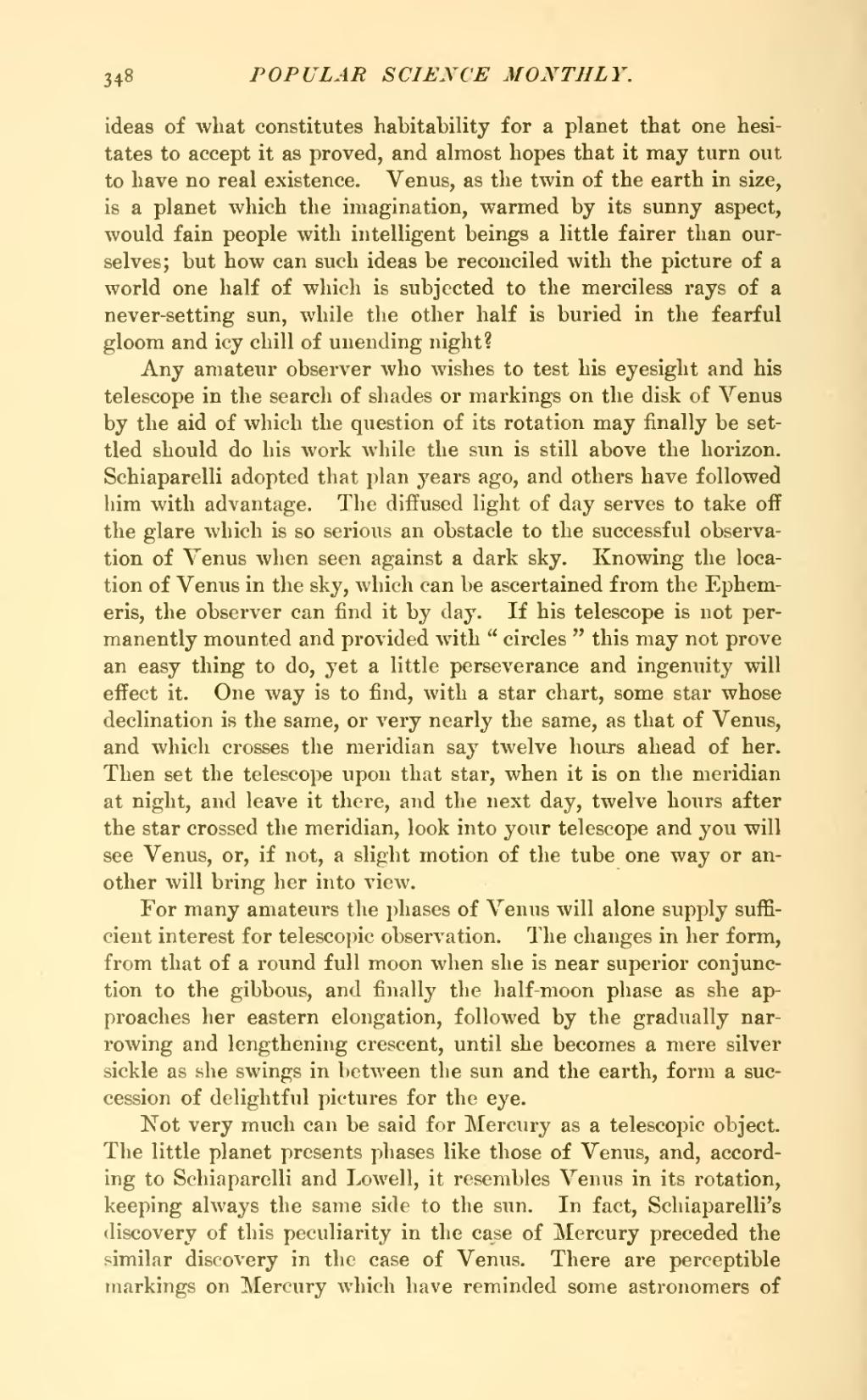ideas of what constitutes habitability for a planet that one hesitates to accept it as proved, and almost hopes that it may turn out to have no real existence. Venus, as the twin of the earth in size, is a planet which the imagination, warmed by its sunny aspect, would fain people with intelligent beings a little fairer than ourselves; but how can such ideas be reconciled with the picture of a world one half of which is subjected to the merciless rays of a never-setting sun, while the other half is buried in the fearful gloom and icy chill of unending night?
Any amateur observer who wishes to test his eyesight and his telescope in the search of shades or markings on the disk of Venus by the aid of which the question of its rotation may finally be settled should do his work while the sun is still above the horizon. Schiaparelli adopted that plan years ago, and others have followed him with advantage. The diffused light of day serves to take off the glare which is so serious an obstacle to the successful observation of Venus when seen against a dark sky. Knowing the location of Venus in the sky, which can be ascertained from the Ephemeris, the observer can find it by day. If his telescope is not permanently mounted and provided with "circles" this may not prove an easy thing to do, yet a little perseverance and ingenuity will effect it. One way is to find, with a star chart, some star whose declination is the same, or very nearly the same, as that of Venus, and which crosses the meridian say twelve hours ahead of her. Then set the telescope upon that star, when it is on the meridian at night, and leave it there, and the next day, twelve hours after the star crossed the meridian, look into your telescope and you will see Venus, or, if not, a slight motion of the tube one way or another will bring her into view.
For many amateurs the phases of Venus will alone supply sufficient interest for telescopic observation. The changes in her form, from that of a round full moon when she is near superior conjunction to the gibbous, and finally the half-moon phase as she approaches her eastern elongation, followed by the gradually narrowing and lengthening crescent, until she becomes a mere silver sickle as she swings in between the sun and the earth, form a succession of delightful pictures for the eye.
Not very much can be said for Mercury as a telescopic object. The little planet presents phases like those of Venus, and, according to Schiaparelli and Lowell, it resembles Venus in its rotation, keeping always the same side to the sun. In fact, Schiaparelli's discovery of this peculiarity in the case of Mercury preceded the similar discovery in the case of Venus. There are perceptible markings on Mercury which have reminded some astronomers of
